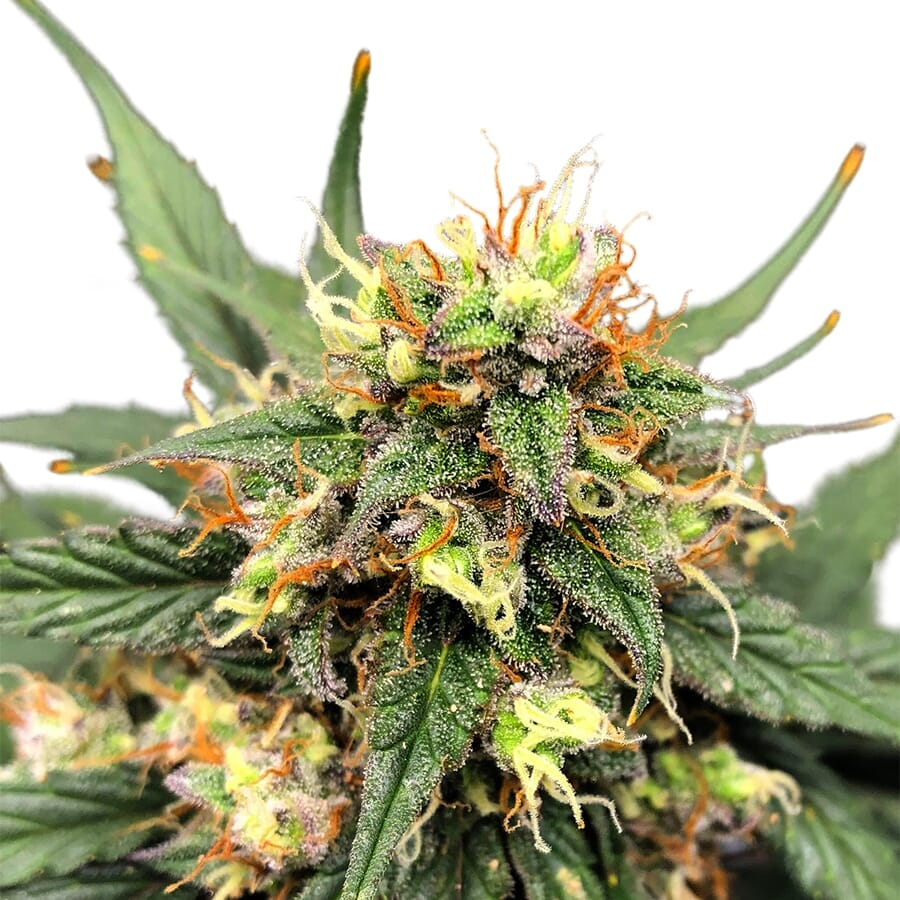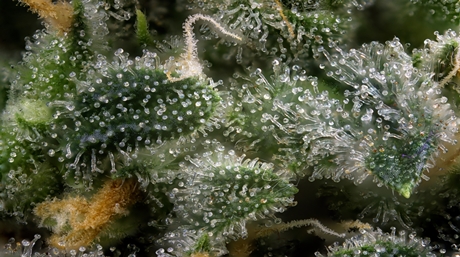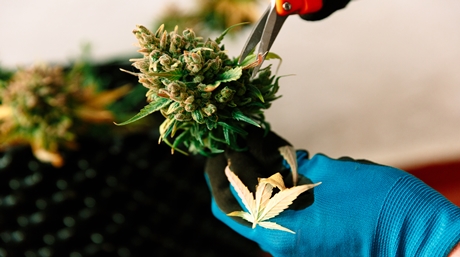There is a lot of money to be made in the legal trade of marijuana, and maybe you are thinking of starting your farm. Or maybe you want to grow the plant for your use. In either case, knowing when to harvest marijuana is very important.
Most plants have a specific period of maturity at which you get the most yield and the best nutritional value. Weed is no different. The optimal harvesting period is when the plant’s potency is at its peak. Harvesting too early will give you a low yield with leaves that are too weak. On the flip side, waiting too long can make your leaves taste bitter. Leaves that are too mature have more cannabinoids, which induce a sleepy effect and not the desired; high; that enhances productivity.
There are a couple of strategies you can use to harvest at the right time if you want a plant that can be smoked even during the day without the consumer falling asleep at their office desk. Let us review the different methods you can use to determine when to harvest marijuana.
Parts of a marijuana plant
Before looking at when to harvest marijuana, let us familiarize ourselves with the parts that make the plant, so we know which parts to focus on when determining when to harvest weed.
Stalk
This is the part that connects one leaf of a marijuana plant to the others. The stalk contains no THC and is unimportant when determining the harvesting period.
Fan leaves
The fan leaves of a weed plant are so conspicuous they have become the universal symbol for weed. What the layman does not know, however, is that the leaves contain deficient levels of THC.
THC
They can provide good indicators for the plant’s maturity, but they are mostly thrown out after trimming.
Stem
This part of the plant contains more THC than the leaf. For this reason, the stem of a marijuana plant is used as an additive for concentrates and tinctures.
Flower
This is inarguably the most important part of a marijuana plant. Most farmers harvest it, which is the best indicator of when to harvest cannabis.
Three parts of a weed flower play an important role in determining maturity:
Pistil
This is the female part of a flower and can be easily identified. The pistil of a marijuana plant is a red or orange hair-like feature that emerges from the flower. While the pistil does not contain any THC, it plays a big role in determining when to harvest marijuana.
Sugar leaves
Unlike fan leaves, the sugar leaves of a weed plant have a high THC concentration. You can identify them easily since they grow out of the flower bud, with only the tips peeking through to the outside. They are normally not smoked since they have a plant-like test, but there are many other things they can be used for.
Trichomes
These are microscopic hairs on the flowers and sugar leaves of a marijuana plant. They are sticky to the touch and contain the highest levels of THC. They are also the best indicators of when to harvest marijuana.
How to observe marijuana plant maturity
Magnifying tools are a must-have if you want to know when to harvest marijuana. The good thing is you will probably already have some of these around before you start growing marijuana. Here are the most popular ones:
- Jeweler’s loupe: this is one of the oldest tools used for this purpose and is therefore cheap and requires less technical skills. It is small and easy to carry around. Most jewelers; loupes have 10X magnification, which is good enough for observing when to harvest weed. However, if you do not have sharp eyes, get a higher magnification.
- Handheld magnifier: at the risk of looking like a scientist from the day, get a handheld magnifier. It is better than a jeweler’s loupe, but carrying around and observing a plant is exhausting. Please familiarize yourself with how to use it before you attempt to gauge the maturity of your plant.
- Phone camera: almost everyone has a phone with a camera fitted with zooming capabilities. The better the resolution of your camera, the more accurate your observation. All you need to do when using your phone’s camera as a magnifying tool is to take a lot of pictures when the light is at its best. Go through the pictures afterward, zooming in on the different parts of your plant to see if any changes indicate maturity.
- Digital microscope: not only are they used by modern scientists, but weed growers can also use them! A digital microscope is the best tool for observing the maturity of your marijuana plant. It provides good lighting and excellent magnification and allows for storing images. This way, you can take pictures of your plant at different stages and compare how it looks as it matures. A digital microscope is more expensive than the other methods mentioned in this list and will need you to invest in a laptop, but the payoff is worth it.
CBN and THC levels
As we have seen above, the trichomes of a marijuana plant produce the highest amount of THC. The color of the trichomes can determine the amount contained at any time. There reaches a point where the trichomes produce the maximum amount of THC, and this is when the plant is at its peak potency. THC is very psychoactive and provides energy to the user.
Since the plant is constantly exposed to the sun and air, the level of THC in the trichomes breaks down after peak potency. UV rays and oxygen break down THC to cannabinol (CBN). CBN is a good sedative and produces a soothing, relaxing effect on the user. The many benefits of CBN include helping with pain, which is what many people with cancer or chronic pain are prescribed. The upside or downside of CBN is that it does not have psychoactive effects. Most growers do not let their weed reach the CBN levels regardless of all of its benefits.
When to harvest cannabis to get THC
THC (tetrahydrocannabinol) is a chemical found in marijuana that causes much of the ‘high’ associated with the plant. Since most users want this high, many farmers like to wait until their plants are ripe with THC before harvesting.
If you want to know when to harvest marijuana with high levels of THC, you must pay attention to the trichomes in the flower. The little ball at the top of a trichome is where all the cannabis goodness is located. You can easily see the changes in this area using a microscope. Here are the things to look out for:
- The buds are still developing when the trichomes are clear. Take care that you look at different buds on the plant since the ones on the top tend to mature faster. Even when your trichomes are clear, you should constantly monitor them since changes appear quickly.
- Your plant matures when you notice cloudy or opaque trichomes. You can start harvesting at this stage for many Indica strains. At this stage, the trichomes have produced all the THC they can and will not make any more. Remember, trichomes on different flowers mature at different rates, so you can remove the developed ones and let the slower ones reach maturity.
- When you notice amber or brownish trichomes, this means that the trichomes cannot produce any more THC. Leaving the plant for too long leads to a breakdown of THC into CBN, which has a soothing effect. 30% amber and 70% cloudy trichomes are the optimum time to start harvesting many strains of marijuana, including Sativa hybrids.
- When your trichomes are fully amber, your plant is too mature.
When to harvest weed based on effects
Since different harvest times have different effects on the user when harvesting cannabis should be dependent on what kind of weed you want to sell. Here is a summary of when to harvest based on the different kinds of high:
- Relaxing high: harvest when the trichomes are 70-90% cloudy.
- Energetic high: harvest when the trichomes are 50% clear and 50% cloudy.
- Euphoric high: when the trichomes are 50-70% cloudy.
Another way you can determine when to harvest cannabis for the different effects depends on the pistil color.
- Euphoric high: the pistils should be around 60-70% dark and curling.
- Relaxing high: the pistils should be around 70-90% dark and curling.
Other indicators of when to harvest marijuana
While potency is the biggest determinant of when to harvest weed, other factors should decide to harvest easier for you. Here are a few:
Flowering time: This will depend on the strain you have planted.
- Indica strains can be harvested 8 weeks after flowering.
- Sativa strains can be harvested between 10 to 12 weeks after flowering.
- Autoflowers are ready to harvest 10 weeks after the transition from seedling to a bud.
Pistils: as we saw earlier, the pistils play a big role in determining when to harvest marijuana. In a healthy weed plant nearing maturity, the pistils stick right out of the body and are white. When the plant is ready for harvesting, the pistils curl back toward the flower and turn dark.
- 50-70% brown indicates a young harvest with a light taste.
- 70-90% dark indicates a ripe harvest with a potent taste.
- 90-100% indicates a late harvest with a sharp taste.
Remember, not all the pistils turn dark at the same time. To maximize your harvest, you can harvest those ready and leave the rest to continue maturing.
Trichomes plus the Pistil: while looking at either the trichomes or the pistil can independently give you good results, combining these methods will give you the most accurate indicators of when to harvest marijuana. Sometimes the pistils remain white even as the trichomes turn cloudy. Other times the pistils start curling while the trichomes remain clear. You will get the most potent THC when both these parts start changing. So instead of depending on just one method, combine the two to determine when to harvest weed.
Extra tips for harvesting marijuana
Here are some tried and tested rules of thumb that will ensure you get better results when determining when to harvest marijuana:
- The harvest window starts when the plant is not growing more or new white hairs or pistils, and nearly half of the pistils have started to darken and curl in.
- If the pistils are almost sticking out, but the trichomes are still translucent, the plant is too young and unprepared for harvesting. You can, however, harvest at this point if you do not want your weed to be potent. Keep in mind that you will get a lower yield at this point.
- The highest level of THC is reached when most trichomes have turned cloudy. Remember to use a microscope or jeweler’s loupe to observe the trichomes. Cloudy trichomes have the highest THC levels and have more psychoactive and euphoric effects.
- The harvest window passes once the trichomes start withering or turning grey. Weed harvested at this stage will act more as a sedative and will not have many psychoactive effects. To get the best weed, harvest within four weeks after the beginning of the harvest window.
- Some weed strains, like the Haze and Sativa strains, never turn amber. You will know when to harvest weed once almost all their trichomes have turned white or cloudy.
- To get the couch lock or sedating effect of weed, harvest when it is toward the end of the harvest period. At this time, the trichomes will be darker.
How to speed up harvesting
Although you should allow for the correct time and organic plant changes to occur before harvesting, sometimes you do not have the patience. The good thing is there are ways to speed up the harvesting time without sacrificing yields and quality. Let us look at some of them.
1. Fewer Hours of Light in the Flowering Stage: You can change the amount of light you allow your plants to get after they start flowering. The amount of light should depend on the strain you planted. Sativa and Haze strains, for example, can mature well without a lot of light. Restricting the amount of light helps the buds mature faster.
2. Get a Quick-Finishing Strain: if you want a quick harvest, get one of the various auto-flowering strains available. These grow up independent of light availability, which is perfect for places that do not get a lot of sunlight. Auto-flowering strains can be ready for harvest within three months of planting.
3. 24 Hours of Light a Day in Vegetative Stage: a weed plant grows through several life stages, and the vegetative stage comes right before the flowering stage. To get a shorter harvesting period, you can expose your plant to light for 24 hours throughout the vegetative stage. This makes the plant mature and gets to the flowering stage faster.
4. Initiate the Flowering Stage Earlier: You can change your light schedule so that your seedlings make buds immediately. This is an inefficient way of growing your weed, but it does speed up the growth process. Before flowering them, wait just a bit to ensure you get a satisfactory amount of bud.
5. Grow Indoors: this method gives you maximum control over how your plants will grow, how big they will get, and what they will yield at harvest. Using potting plants or a greenhouse is a good way to ensure all this control.
6. Use Correct Nutrients for the Correct Stage: a marijuana plant requires different nutrients as it goes through the different growth stages. The astute farmer will familiarize themselves with the nutrient requirements and either buy them as the plant grows or hand-mix them depending on their needs. Feeding the plant correctly will reduce the overall time before harvest.
7. React Quickly to Problems: like other plants, weed plants can get pest infestations or experience illnesses like too many nutrients. Pay close attention to your plants and note every problem that arises, no matter how small. Reacting quickly also saves you from dealing with out-of-control problems further on. The more attention you give to your plant, the faster you can harvest.
Conculsion
Every weed farmer anticipates the time to harvest and put their product into the market. Determining when to harvest for the best yield and potency can be difficult. Fortunately, you can pinpoint the harvest time to an exact science with practice. Remember to familiarize yourself with the plant, get the right equipment, and keep an eye out for pistils and trichomes. Happy farming!
FREQUENTLY ASKED QUESTIONS
How can I tell when my marijuana plant is ready for harvest?
The best indicators for harvesting are the trichomes and pistils. When trichomes turn from clear to cloudy and about 70-90% of the pistils are dark and curling, your plant is ready for a potent and balanced harvest.
What tools can help determine the maturity of marijuana plants?
Tools like a jeweler’s loupe, handheld magnifier, phone camera, and digital microscope can help observe the trichomes and pistils closely to determine the optimal harvest time for marijuana plants.
How does the harvest time affect the effects of marijuana?
Harvesting when trichomes are 50-70% cloudy will result in a euphoric high, while 70-90% cloudy trichomes will provide a relaxing high. Clear trichomes offer a less potent effect, and amber trichomes result in a more sedative effect due to higher CBN levels.














